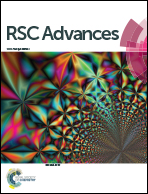Inert nanoparticle suppression of gas explosion in the presence of obstacles
Abstract
The suppressing effects of inert nanoparticles on methane–air explosion, in an obstructed chamber with internal dimensions of 150 mm × 150 mm × 500 mm, were experimentally investigated. To this end, the flame behaviors in the presence of obstacles as well as overpressure transients during the explosions with and without nanoparticles were compared. Additionally, the effects of density, diameter, and material of nanoparticles on the suppressing behaviors were analyzed as well. The results showed that the methane–air deflagrating flame remains generally light blue if the nanoparticles are added. In particular, the flame obstacle interaction may enhance the suppression effect of the nanoparticles, and the flame acceleration rate and the peak overpressure decrease significantly. Increasing explosion suppression is seen up to about 100 g m−3 particle density, but further increase in particle density, up to 150 g m−3, yields no further increase in the explosion suppression ability. And as the particle size decreases, the suppressing effect is more evident. The experiments also showed that Al(OH)3, Mg(OH)2, and SiO2 all can be used to suppress the flame propagation and overpressure. However, the metal hydroxides suppress the methane explosions even more efficiently than SiO2 particles; Al(OH)3 particles have a slightly better inhibiting effect than Mg(OH)2. Mechanisms for the observed phenomena were discussed.



 Please wait while we load your content...
Please wait while we load your content...